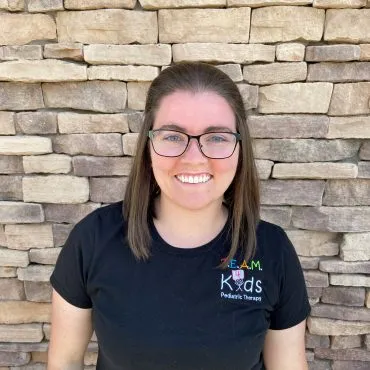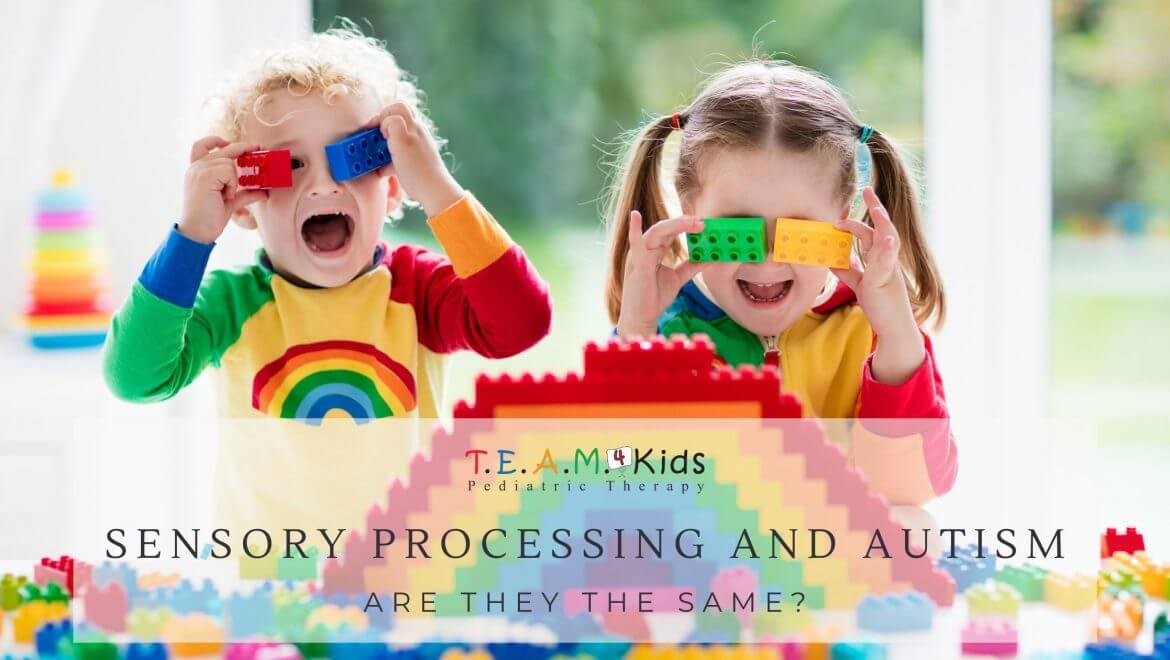Sensory Processing and Autism: Are they the same? This is a very common question that many concerned parents wonder. Occupational Therapist Cami explains the differences between SPD and ASD.
What is Sensory Processing Disorder?
Sensory processing is a person’s ability to utilize their senses to notice environmental information (oral, tactile, auditory, visual, olfactory, proprioceptive, vestibular, and internal sensations), interpret that information, and respond. Individuals with sensory processing difficulties or disorder do not process sensory information appropriately and as a result do not always respond in a socially appropriate manner to sensory information. There is no consistent set of symptoms to diagnose a person with Sensory Processing Disorder (SPD) and each individual will look very different. Please see a previous blog post “SENSORY 101” (https://www.team4kids.com/sensory-101/) for more information.
What is Autism?
“Autism Spectrum Disorder (ASD) refers to a broad range of conditions characterized by challenges with social skills, repetitive behaviors, speech, and nonverbal communication” (Autismspeaks.org). Since ASD is identified as a spectrum disorder that means that a person can fall anywhere on a sliding scale and be considered autistic with it being mild to severe. The way it looks varies from person to person. Dr. Stephen Shore stated, “If you’ve met one person with autism, you’ve met one person with autism”. Basically, he meant that no two people with autism will look the same or have the same behaviors. Please see autismspeaks.org for more information.
Are they the same thing?
No. ASD and SPD are separate medical diagnoses but they might look similar to some people. They are similar in that neither autism or sensory processing will go away. A child will simply grow up and learn to cope with their challenges. Take this analogy for example: An adult who recently took a job working a swing shift will have learned to cope with a shift change. Initially it is very difficult to deal with the schedule change but then the adult will change their routine, they will go to bed earlier, and they will learn to adapt. A child with ASD and SPD will both benefit from Occupational Therapy to help them learn to cope and develop adaptive strategies to address their specific challenges.
Why do people confuse them?
Individuals with Autism almost always have some sensory processing difficulties (they will vary significantly from person to person). However, a person with Sensory Processing Disorder does not necessarily have Autism. They are definitely intertwined and commonly seen together which is why people often think they mean the same thing.
What should I do if I am worried my child has ASD or SPD?
Seek out an occupational therapist! They will be able to help you and guide you to further testing to help your child receive the proper diagnosis. A diagnosis will help them to receive the services, care, and medical coverage that they will need for the rest of their lives. It is important to know as soon as possible to ensure that they receive intervention early. Early treatment can benefit a child’s progression and development. Ask for help early! If they don’t have ASD or SPD, your therapist will tell you. If they do then you will be giving them a leg up.

Camiel Clark

